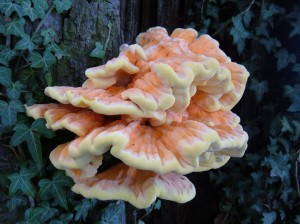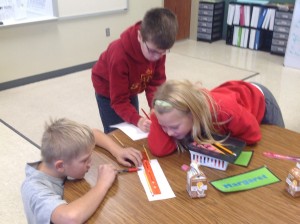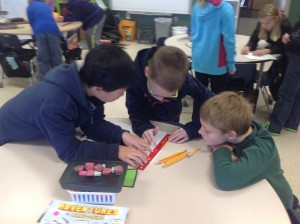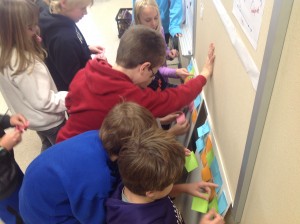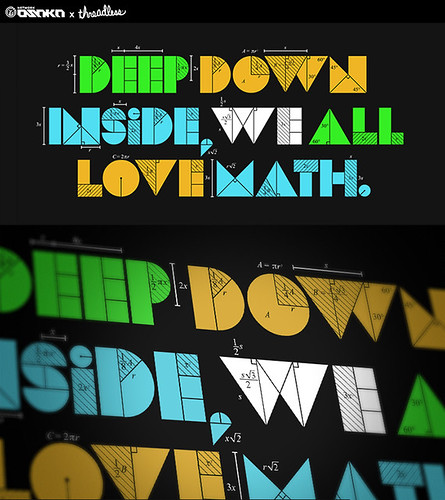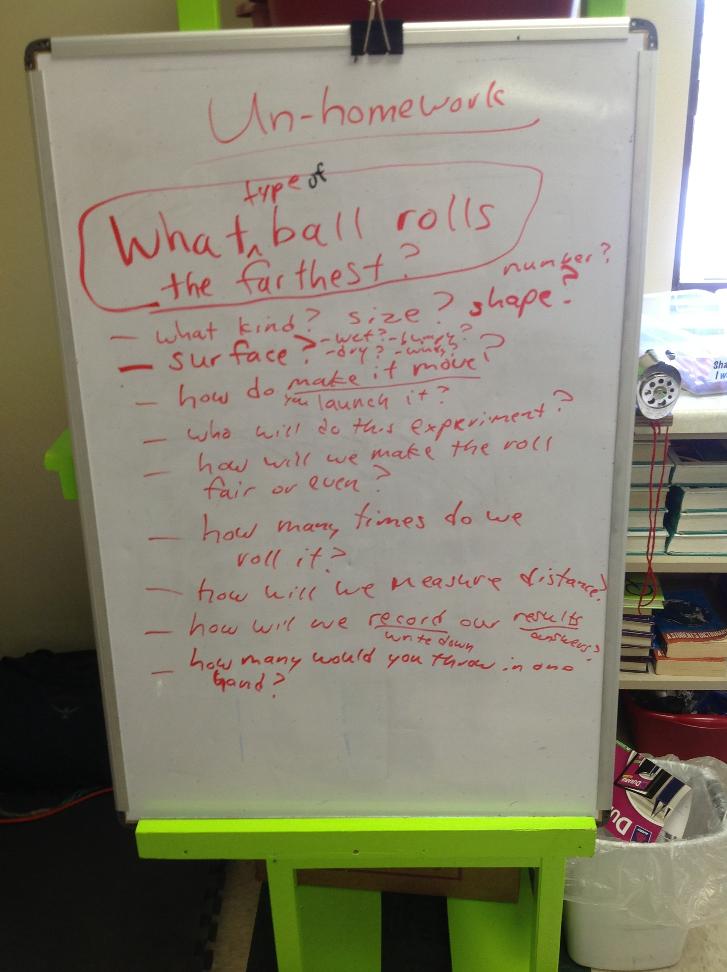Lots of time has passed since I last posted. I have been up to my eyeballs in new curriculum planning/envisioning (fourth grade is new for me), union negotiations (I’m the chief negotiator for our local), and in creating portfolio entries for my attempt to achieve National Board Certification. While there are many stories to tell about what has happened lately, a recent post about by mentor, ether-friend Vicki Vinton jarred loose a post that has been rattling around in my brain for awhile.
Vinton talks about how she’s benefited from her connection with math colleagues who talk about “rich tasks.” In upcoming posts, she will talk about how to apply the idea of rich tasks to reading, too. According to Vinton, rich tasks are those that “provide multiple entry points”, “invite creative and critical thinking”, “spotlight…both processes and product…(to help) students better see the connection between means and ends”, and “promote student ownership.” In other words, they are the kind of tasks that a teacher loves to create and witness.
Like Vicki, I’ve also benefited from being in touch with math thinkers who seek to understand what students are thinking, what their misconceptions are, where the limits of their knowledge and skill lie, and how they approach/attack a math task. The richer the task, it seems, the greater the opportunity to discover the edges of student thinking. And, truthfully, teaching gets really fun when we are near those edges.
If there is any subject that can create a rich task, science is one! And that’s where we are right now.
Recently we finished taking the IA Assessments To celebrate, we’re learning a lot of science. Our task has been to design and build an air-powered skimmer.
First, the students formed design teams. I asked them to create a logo and a slogan. That was an interesting task in itself. We “closely read” some logos and slogans that we found on line, how they tried to transmit those meanings through graphics and short text.
This part of the task helped me see many things, in particular how students tried to manage their own uniqueness as part of a group, but also their awareness of an audience outside themselves. Some were better able to imagine that outside audience than others. These degrees and kinds other-awareness were interesting grist for the teacher thought-mill, and seemed so connected to the crucial skills of listening and questioning that go into learning. A rich task like this helped me see the learners better. Anything that helps me understand them better as people seems to help my teaching.
Then, the students were given the “task” to create a wind powered skimmer that would go at least 60cm, but as far as possible. They set to work creating their initial sail designs. I observed and asked questions about the rationale for their design work. What do you think will happen? Why did you put that there? Why did you make this shape? Questions of that sort.
The project used a typical engineering design protocol, which we have used over and over again.

The design process we used.
After the students designed their sails, they tested them, recorded the information from the tests, and re-designed to solve the problems that they discovered in the testing stage. I continued asking questions, helped them solve some of the group process issues that inevitably arose, and pushed them to examine the principles behind their designs. Although the students often “designed” based on principles (they had a gut-level sense of cause and effect as far as their design went), articulating those principles in more general ways is new to them and one of my goals for this project.
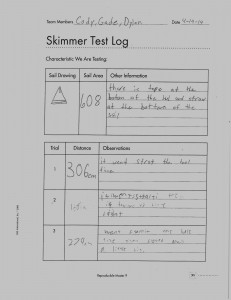
Along the way, to help them focus on what we could generalize from our work, we gathered together periodically to talk about what design principles we have discovered about what make sails work well, which the children could use to help them re-designed their sails. I introduced them to vocabulary like these: friction, friction force, sail frontal area, hull, bow, stern, mast, torque…
Finally, we had a competition to see whose sail design would make the skimmer go the farthest. Each design team then evaluated the results of the competition. We created short videos (ostensibly to “send” to the EarthToy company president, IM Green) describing the design as accurately as possible, the outcome of that design as evidenced by the competition, their thoughts on why this outcome happened (using scientific terminology), and what their next design idea would be and why they expect that idea to be an improvement over the one they entered in the contest.
This reflection was an interesting task in itself, and putting it in video form allowed the children a chance to reflect on their presentation for future work.
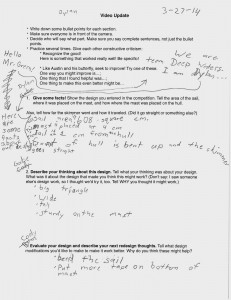
I realized from this process that I am so much happier, as a teacher, working backwards from student thinking to strategy instruction than I am starting with delivering the strategy without deeply knowing the student thinking first. I really enjoy giving the students a big, unwieldy problem or task whether it be in math, in science, or in reading. Then I like to probe the children’s thinking as they complete the task. This kind of teaching is less efficient and messier, I know.
This kind of rich science task could be transferred to other areas by analogy. For example, just this last week, as we were revising drafts of persuasive essays, one of the students mentioned that revising was a lot like what we were doing in science with our skimmers. I asked for elaboration (love that word). His response: It’s where we design something and then change it to make it perform better. If we can internalize that idea, that revision is re-design for the purpose of better performance, then perhaps it will make our writing better, too? Maybe, too, it’s at the heart of growth mindsets and those wonderful “principles” of math practice that the CCSS-Math outlines.


